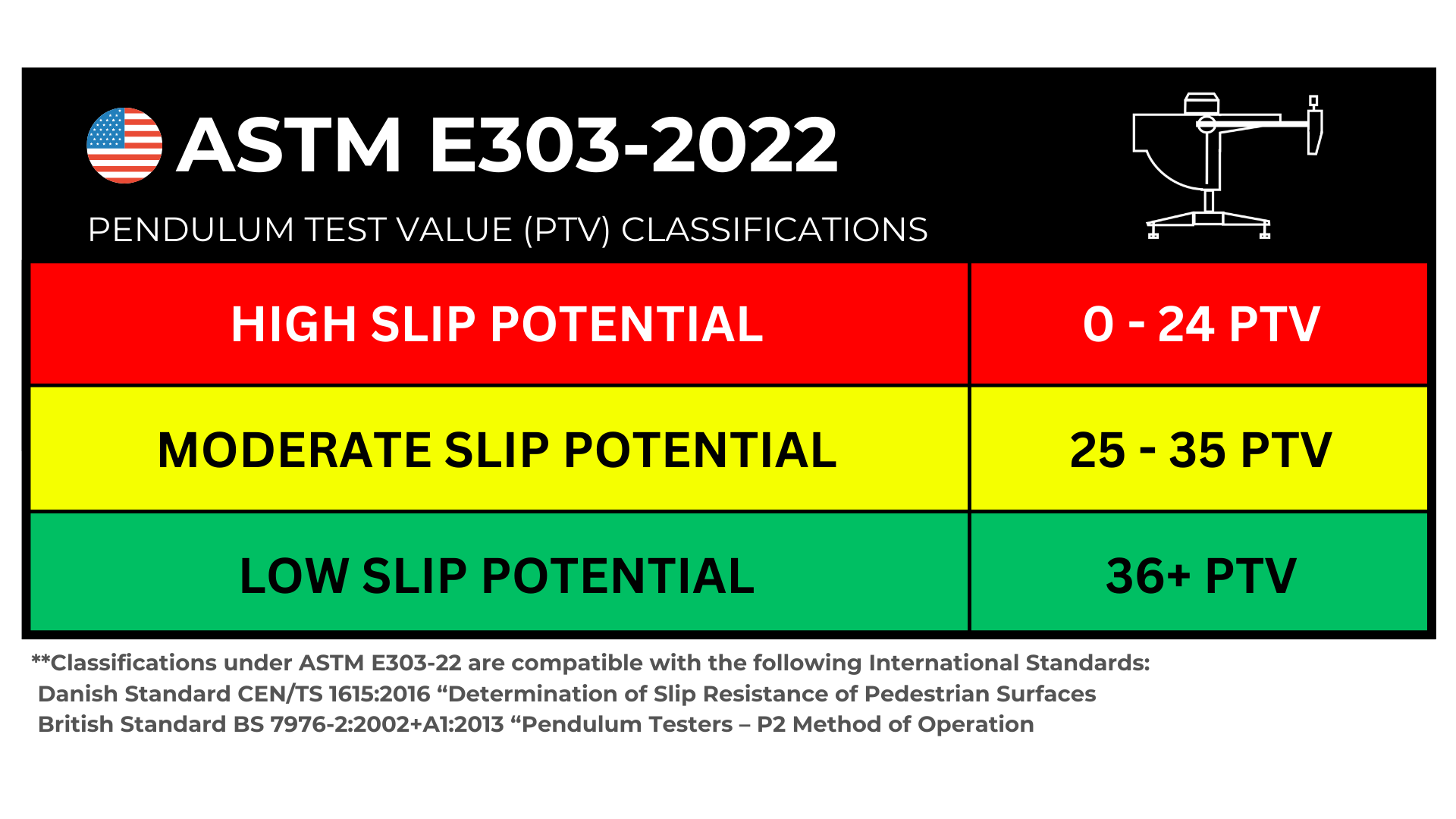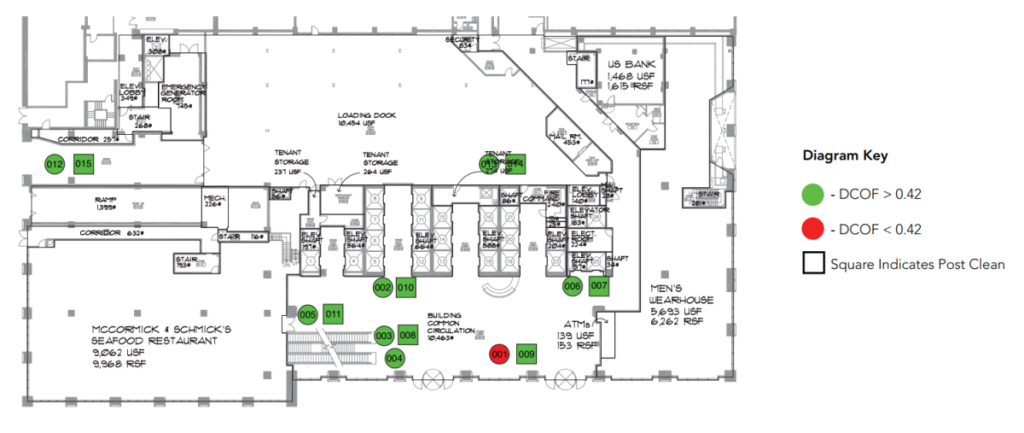Our Business
Walkway Management South Florida is at the forefront of walkway testing technology and services dedicated to safeguarding our clients against slip and fall accidents. As a member of a nationwide network of safety experts and support personnel, we provide a holistic solution for detecting, addressing, and maintaining walkway hazards. Our team offers certified products and services that adhere to the industry’s highest performance standards.
The Walkway Safety Approach
We provide a customizable “solution shop” for all industries, properties, and public areas. The demand for comprehensive slip and fall solutions is growing rapidly. No other safety company matches our value for associates and clients. Our qualified staff ensures your company’s success. We cover all aspects of walkway safety management.
Who We Are
Walkway Management South Florida is under the ownership and operation of Claudius Nan and his wife Raluca Nan. In 2023, Claudius expanded the services into Atlanta and Tampa Bay. The Atlanta office is run by Rodderick Schroy and the Tampa office is currently ran by Kimberly Jansen.
With over 20 years of experience in the flooring industry, Claudius has collaborated with tile manufacturers, installers, and product providers. He holds a certification from the University of North Texas College of Engineering as a Walkway Auditor and has received comprehensive training and certification to operate tribometers such as the BOT-3000e and the British Pendulum. Moreover, Claudius has partnered with multiple law firms to provide expert witness testimony and consultation services in slip and fall cases.
Who We Serve
Understanding Friction Measurements
Coefficient of Friction: (CoF) is a vital safety term, especially when it comes to preventing slip and falls. In simple terms, it's a number that measures how much grip or traction a surface offers. This measurement is key in designing safer spaces, be it in homes, workplaces or other public areas.
Pendulum Test Value (PTV): This refers to tests that involves a swinging pendulum that simulates a heel strike, the most common cause of slips, to measure the frictional resistance of the surface. The pendulum's foot (usually made of rubber) strikes the surface at a set speed, the resistance is then measured as "PTV".
Measuring the Coefficient of Friction: The CoF is determined by dividing the force needed to slide an object across a surface by the weight of the object. This ratio gives us a number without units, which indicates how slippery or grippy a surface is. Floors with higher CoF values offer better traction reducing the risk of slip and falls. In Floor Safety, there are two ways to measure CoF, one is Static and one is Dynamic (Kinetic).
SCOF vs DCOF
Static: Measures the amount of force required to initiate movement or cause slipping when a person is standing still on a surface. It is important to note that standards for measuring SCOF have all been withdrawn.
Dynamic: The dynamic (or kinetic) coefficient of friction (DCOF) is the measure of the resistance to motion between two surfaces that are already in motion relative to each other. In practical terms, it refers to the amount of force needed to keep an object sliding or moving over a surface once it has already started moving. For instance, when considering a person walking, it's the level of resistance they feel underfoot while in motion, impacting their ability to walk without slipping.
Pendulum Test Value vs Coefficient of Friction
Correlation: While both PTV and CoF measure the slip resistance of surfaces, they do so in different ways. PTV is often considered a more realistic measure of slip potential in real-world conditions because it simulates the action of a foot striking a surface.
PTV is often considered a more realistic measure of slip potential in real-world conditions because it simulates the action of a foot striking a surface.
Conversion: There is no direct, universally accepted formula to convert PTV to CoF or vice versa, as they are derived from different testing methodologies. However, both higher PTV and higher CoF values generally indicate better slip resistance.
Usage in Standards: PTV is widely used internationally and nationally and is recognized in various safety standards for assessing floor slipperiness. CoF is also used globally and is featured in many safety standards, but the methods for measuring CoF can vary.
Statistics Regarding Slip and Falls
-
Slip and Falls account for 50% of all accidental deaths at home.
-
Over 9 million adults and children visited the emergency room in 2019 for fall related injuries.
-
According to a CDC Report in 2020, the costs for fall related injuries totaled over 361 BILLION DOLLARS! This includes medical costs, work loss costs and quality of life lost costs.
-
Over 35,000 people died in a slip and fall accident in the United States in 2019, according to the National Safety Council.
-
Slip and Fall incidents account for more severe injuries in the United States than motor vehicle accidents.
-
Slip and Fall injuries remain the leading cause of non-fatal medical treatment in the United States.
-
Slip and Fall remain the leading cause of injury-related deaths in seniors over sixty-four years of age.
-
More traumatic brain injuries are caused by falls than any other contributing factor.
-
The National Safety Council ranks falling with the highest odds of dying (1 in 127), ranking sixth in leading cause of death in the United States.
-
60% of all fall-related deaths occur to individuals seventy-five years and older.
Slip and Falls in the Workplace
-
OSHA revealed nearly 230,000 reports of non-fatal accidents involving a slip and fall in 2019.
-
Nearly 900 fatal work-related slips, trips and falls were reported in all occupational sectors.
-
More than 60% of all slip and fall accidents occurred in the retail trade, wholesale, and services industries.
-
Slip and Fall accidents accounted for more than 25% of reported work injuries in 2019.
-
Nearly 25% of all employee slip and fall injuries on the job required over 31 days of recovery before returning to work.
-
The Industrial Safety & Occupational Health Markets revealed that over 85% of workers’ compensation claims involved employees falling on slippery surfaces.
-
Insurance statistics show that 16% of all workers’ compensation benefits are associated with slip and fall accidents on the job and represent over 25% of costs.
-
American Trucking Association statistics show that slip and falls are the leading cause of compensable injuries throughout the trucking industry.
-
Injuries from slip and fall accidents are the primary cause of missing work.
-
Approximately 48,000 individuals required days off from work in 2019 due to severe injuries from falling.
Sources for Slip and Fall Statistics:
National Standards & Building Codes

National Floor Safety Standards and Building Codes are always changing and improving. Our passion and mission is slip and fall prevention. Knowing what the current standards and building codes are is vital to the success of our mission.
Whether you're building a new house or updating a business space, knowing the industries safety rules is key to preventing accidents and lawsuits. We're here to help you understand important safety standards for floors.
At Walkway Management South Florida, we also take time to know and understand National Standards in regards to Floor Safety. Standards from the American National Standard Institute (ANSI), the American Society for Testing and Materials (ASTM), the National Floor Safety Institute (NFSI), and other National Standard Committees that are relevant in the industry. We will also be working on adding International Standards to our site.
We also created a section for you to explore the current Building Codes and what they say. Find out what OSHA and ADA say about a surface's slip resistance. We also explore other building codes such as Florida's Building Code, the International Swimming Pool & Spa Code, International Building Code, the International Fire Code and more.
Floor Audit Reports
Our Audit Reports are fully compliant with the ASTM F2048-00 “Standard Practice for Reporting Slip Resistance Test Results." They follow the Daubert Standard and therefore are admissible in the court of law. We have partnered with Safe Space Ingenuity and their State-of-the-Art Secure Tribometry Evaluation Platform (STEP) to develop thorough reports and evaluations for the floor safety industry.
Our reports are prepared in accordance with ASTM F1694-14, “Standard Guide For Composing Walkway Surface Investigation, Evaluation, and Incident Report Forms for Slips, Stumbles, Trips, and Falls,” and the ASTM F2048-00, “Standard Practice for Reporting Slip Resistance Test Results.” The data contained within the report is intended to provide factual information measured with either the BOT-3000e or the British Pendulum.
Walmart paid $7.5 Million to man who slipped.
A man named Henry Walker was awarded $7.5 million by a Russell County jury in a lawsuit against Walmart after he fell and broke his hip while reaching for a watermelon in a container in the Phenix City store in 2015. The court found Walmart negligent in maintaining a safe environment and failing to warn the public of potential hazards, leading to a payout of $2.5 million in compensatory damages and $5 million in punitive damages. Walmart plans to appeal the decision.
-Source: AL News - Phenix City Man Sues Walmart
$10 Million Awarded to Colorado Resident in Walmart Slip & Fall
A Walmart located in Greeley, Colorado, settled a lawsuit with Holly Averyt for slightly over $10 million. Averyt had slipped and fallen on grease outside the store, resulting in significant injuries. Walmart initially denied the spill, but evidence was found by Averyt's lawyers to support her claim. As a result of the fall, Averyt is no longer able to work as a truck driver and experiences ongoing pain and depression. Although her initial award was $15 million, it was reduced to $10 million due to state regulations on the amount of compensation for pain and suffering.
-Source: Walmart Denver Post
$13 Million for Las Vegas Woman
Lowes Home Center paid out $13 million to a woman after she fell while shopping for plants. Kelly Hendrickson fell on a slippery substance on the floor, and her lawyers were able to prove that Lowes knew that the standing water in the outdoor area was a danger, as 33 other accidents caused by similar situations had already occured in Lowes stores.
-Source: Review Journal
$12.2 Million Paid by Gas Station Convenience Store
A woman slipped and fell while at a gas station convenience store and sustained serious injuries. The awning above the front entrance was leaking and caused a puddle in the walkway. During the fall, the woman hit her chest and chin, resulting in a brain injury and ongoing seizures.
The woman's injuries made it impossible for her to perform her work duties, and she subsequently filed a slip and fall claim against the convenience store and its insurance companies. After legal proceedings, she was awarded $12.2 million to cover the cost of her damages, including lost wages and earning capacity.
The woman's attorneys presented the case in a way that was similar to a wrongful death claim, emphasizing that the woman's quality of life had been severely impacted by the accident. To those close to her, it was as though she had died as a result of the fall.
-Source: Daily Press
Computer Operator Suffers Ankle Fracture
A 53 year-old computer operator suffered an ankle fracture and other injuries requiring hospitalization when she slipped and fell during a lunch break while attending computer classes. The puddle was located on the patio of defendant’s premises. The plaintiff contended that the poor condition of the patio was the cause of the accident and her injuries. After trial, the parties settled the lawsuit for $125,000.
Tennessee Woman Received $525,000 in Damages
The case of Corley v. Wal-Mart Stores East, LP involved a woman who slipped and fell while in a store in Antioch, TN, resulting in serious injuries. The woman claimed that she had stepped in water and slipped. Although there was no security footage of the fall, the store's video footage showed that employees were cleaning up a large area following her injuries and an employee had walked through the area just before the fall.
The court found that Walmart was 90 percent responsible for the woman's injuries and awarded her $525,000 in damages. An appellate court later confirmed the ruling and the amount of compensation awarded to the victim.
-Source: Corely v. Wal-Mart Stores, Inc.
Target Slip & Fall Results in $2.1 Million Verdict
On December 14, 2013, Horton experienced a slip and fall accident on a recently mopped floor. The floor had been cleaned due to a soda bottle spill in a primary walkway. The employee responsible for the clean-up used a "wet soapy substance" and placed warning cones near the area. However, Horton claimed that the mopping was done carelessly, resulting in much of the residual moisture being present outside the marked hazard zone.
-Source: VerdictSearch.com
Patron Injured in Slip and Fall at Restaurant Receives Settlement
While dining at the defendant's restaurant, the plaintiff slipped and fell on a liquid substance while walking towards her table near the service area of the bar. The plaintiff claimed that the defendants were responsible for their negligence in maintaining a hazardous condition in the bar area and failing to post warning signs or take appropriate action to rectify the situation. The plaintiff sought compensation for medical expenses and injuries. The defendants argued that the plaintiff failed to provide evidence that they were aware or should have been aware of the dangerous condition. Despite the defendants' arguments, the plaintiff was awarded damages for medical expenses, past and future suffering, and loss of enjoyment of life until the date of the verdict, totaling $160,665.
Elderly Woman Awarded $265,000
An 88-year-old client slipped and fell on water that had accumulated on the floor of a store, resulting in a fractured right hip that required surgical intervention. The accident took place on a rainy day, and evidence indicated that other customers had tracked in the water. The store was aware of the water on the floor but failed to place adequate mats to prevent slips and falls. The settlement was reached just before the trial was due to begin. It is believed that this settlement is one of the highest ever awarded in Connecticut for a slip and fall case involving an individual in their late 80s who sustained a fractured hip.
Frequently Asked Questions
SCOF- Static: Measures the amount of force required to initiate movement or cause slipping when a person is standing still on a surface. It is important to note that standards for measuring SCOF have all been withdrawn.
DCOF- Dynamic: The dynamic (or kinetic) coefficient of friction (DCOF) is the measure of the resistance to motion between two surfaces that are already in motion relative to each other. In practical terms, it refers to the amount of force needed to keep an object sliding or moving over a surface once it has already started moving. For instance, when considering a person walking, it’s the level of resistance they feel underfoot while in motion, impacting their ability to walk without slipping.
PTV stands for the Pendulum Test Value, a measurement of how slippery a surface is, measured with a tribometer called the British Pendulum, which stimulates a foot swinging across a surface.
Check out the graphic below to understand where your PTV should be at in order to be considered in the ‘Low Slip Potential’ category.

Any pool deck or outdoor area under 1,000sqft is a flat rate of $1,850. Areas over 1,000sqft is $2.25 per sqft. This price is on ‘never been sealed before’ surfaces. Click here for more information!
This is true. There are plenty of other companies that will seal your travertine and/or paver surfaces. Some even offer slip resistance as well. However, what they do to achieve “slip resistance” is they add a rounded plastic aggregate to the surface, like “Shark Grip”. Majority of the pool decks we are called out to, have been treated in this manner and all fail to meet the 0.55 requirement. The best way to think about it, is that we don’t sell sealing services… we are selling safety. If you want to seal your travertine or paver surface, there is only one company that can do it with a scientifically proven method for slip resistance!
So if you are going to make my travertine non-slip, does that mean that I have to give up the gloss?
No! That’s the beauty with our system! We can offer a highly-glossy finish WITH the safety of ANSI A326.3 compliant floors!
All exterior surfaces are expected to meet the DCOF threshold of 0.55 under wet conditions.
We will not accept or do any job without the anti-slip. We are selling safety!
It is recommended to seal your travertine to protect from mold, dirt, mildew and to give it longer life.
It is estimated that 85% of worker’s compensation claims are attributed to employees slipping on slick floors (Industrial Safety & Occupational Health Markets 5th edition). Slip-and-fall accidents are the leading cause of visits to the ER and are the leading cause of all accidental deaths in homes each year. We can help prevent these slips and falls with our range of products for almost all surface types.
Check out our Remediation page for more information as well.
We have a solution for every floor surface there is! To date, we have not come across a surface we have not been able to dramatically increase the Coefficient of Friction!
We do recommend that you use our ReBoost Cleaning Solution to clean your floors and we are also available to do a training session with your staff to show the proper way of cleaning and maintaining your treated floors.
This depends on the surface solution for your floor. Every floor is different and requires a different method of installation to achieve a safe floor. Some treatments can last up to 7 years! We recommend quarterly testing to monitor the DCOF after treatment.
Yes, our testing concludes with a legal document that is in accordance with both the ASTM F1694-14 “Standard Guide for Composing Walkway Surface Investigation, Evaluation and Incident Report Forms for Slips, Stumbles, Trips and Falls” and the ASTM F2048-00 “Standard Practice for Reporting Slip Resistance Test Results.” Our testing follows the Daubert Principle and therefore it is admissible in the court of law.
Static friction is friction that occurs between two bodies in contact with one another while they are at rest. It’s friction which prevents an object from moving while it is still. Dynamic (or kinetic) friction is friction that opposes the movement of a body which is already in motion. It’s friction that slows or stops an object from moving.
We are able to provide testing for the following standards:
- ANSI A326.3 (DCOF)
- ANSI A137.1 (DCOF)
- NFSI B101.1 (SCOF)
- ASTM E303 (PTV)*
- Please note that classifications under the ASTM E303 Test Method is also compatible with the following international standards:
-
-
- CEN/TS 1615:206
- BS 7976-2:2002+A1:2013
-
We test using the BOT-3000e and the British Pendulum Skid Tester. Both tribometers are calibrated and certified.
According to a study done by CNA Insurance, 50% of all floor surfaces in the United States are under the ANSI A326.3 standard of interior, wet dcof value of 0.42. We recommend you use the ANSI A326.3 standard to monitor and track your dcof levels.
If you are concerned with slip potential, we recommend you look at the ASTM E303 standard. The British Pendulum is backed by 50 years of international research and is able to provide a very accurate reading for insight into your floor’s slip potential (see graph below).
You should consider slip testing your floors to find out exactly where you stand! Are you vulnerable to slip and fall lawsuits? or are you protected… Find out more here!






